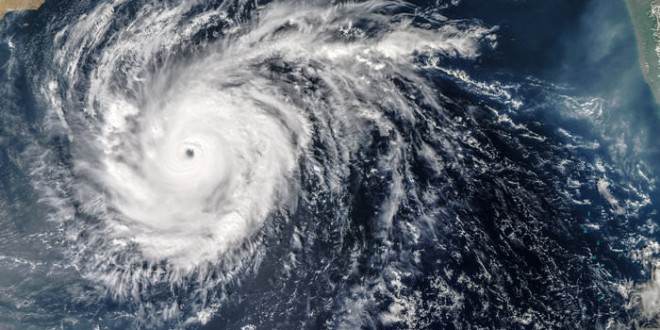Cyclone Chapala was expected to unleash 400mm of tropical rainfall on central coastal Yemen by the end of the day on Tuesday when it dumps three years worth of precipitation within 24 hours, says a leading global weather expert on climate anomalies.
Officials and meteorologists say the storm is the most intense in decades in the arid country, whose storm response is hampered by poverty and a raging civil war.
In the provincial capital Mukalla, whose 300,000 people are largely ruled by al Qaeda fighters since the army withdrew in April, water submerged cars on city streets and caused dozens of families to flee to a hospital for fear of rock slides.
Residents said the seafront promenade and many homes had been destroyed by the cyclone, called Chapala, and officials in the dry hinterland province of Shabwa said about 6000 people had moved to higher ground.
“The wind knocked out power completely in the city and people were terrified. Some residents had to leave their homes and escape to higher areas where flooding was less; it was a difficult night but it passed off peacefully,” said Sabri Saleem, who lives in Mukalla.
There were no initial reports of injuries.
The cyclone first hit the remote Yemeni island of Socotra, killing three people and displacing thousands.
An island of natural beauty, Socotra is home to hundreds of plant species found nowhere else on Earth and lies 380 km off Yemen in the Arabian Sea. Its 50,000 residents speak their own language.
Meteorological agencies predicted Chapala would hit land around Balhaf, site of Yemen’s liquefied natural gas terminal, and weakening as it advanced towards the capital Sanaa in the country’s north.
The facility has been mostly shuttered since the start of a war in March between a Saudi-led Arab military coalition and the Iran-allied Houthi movement which controls Sanaa.
It was not immediately clear if the terminal, once a lifeline for Yemen’s weak economy, suffered damage.
Agencies/Canadajournal
 Canada Journal – News of the World Articles and videos to bring you the biggest Canadian news stories from across the country every day
Canada Journal – News of the World Articles and videos to bring you the biggest Canadian news stories from across the country every day



